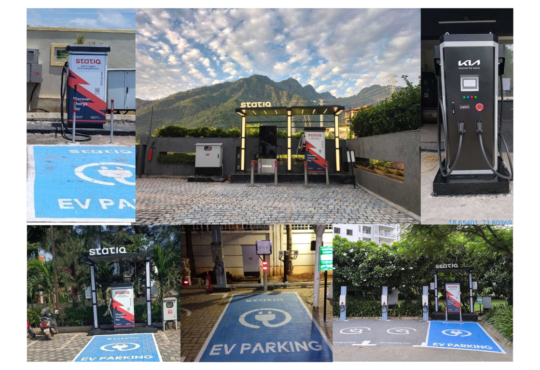
Does Electric Vehicle Maintenance Cost Really Help You Save Money For Your Next Car Purchase?

Are you planning to buy your first electric vehicle (EV)?
Electric vehicles (EVs) are gaining popularity among the masses due to various subsidies and exemptions offered by the government under their initiatives to promote sustainable mobility. In the time of petrol/diesel inflation, EVs have emerged as a possible solution that will not only help people to eliminate their fuel costs but will also contribute to their monthly budget due to their low maintenance cost.
Unlike traditional internal combustion engine (ICE) vehicles, EVs have fewer moving parts and require low maintenance costs. In this blog, we will dive into the maintenance costs associated with EVs, compare them to conventional vehicles, and highlight the potential savings that can be achieved through EV ownership.
Reduced Maintenance Complexity
Electric vehicles have a simpler design compared to their ICE counterparts. They lack components like the engine, transmission, and exhaust system, which are prone to wear and tear. As a result, EVs typically require fewer repairs and have reduced maintenance complexity. This translates into potential cost savings for EV owners
Battery Life and Maintenance
The battery pack is a crucial component of an electric vehicle. While batteries are designed to be durable and long-lasting, they do require some maintenance considerations:
- Battery Capacity: An EV battery’s capacity may degrade slightly over time. However, this degradation is generally slow and can be mitigated through proper charging habits and regular maintenance.
To increase the battery life of an EV, always charge your electric vehicle when the battery level reaches 20% or below, and plug out the charging when the battery level reaches 80-90%. - Battery Cooling: EV batteries perform optimally when kept within a specific temperature range. Ensuring proper cooling of the battery pack is essential to maintain its longevity and efficiency.
- Battery Replacement: The eventual replacement of an EV battery pack is a consideration for long-term ownership. However, as technology advances and economies of scale improve, the cost of battery replacements is expected to decline.
Lithium is one of the main components required to manufacture an EV battery. Fortunately, India has discovered Lithium reserves in Kashmir that will reduce their dependency on battery imports. This will help the automobile industry to provide affordable electric vehicles to customers.
Brakes and Tires

Many EV models employ regenerative braking technology, which helps recharge the battery by converting kinetic energy into electrical energy. This reduces the wear on traditional friction brakes, resulting in less frequent brake pad replacements.
Additionally, regenerative braking can extend the lifespan of tires as it reduces the strain on them during deceleration. These factors contribute to lower maintenance costs for brakes and tires compared to ICE vehicles.
Fluids and Filters
Another advantage of EVs is the reduction in fluid and filter maintenance. Unlike ICE vehicles, which require periodic oil changes, EVs do not have engines that require oil. This eliminates the need for oil replacements and associated filter changes. However, EVs still require routine checks and maintenance for coolant and brake fluid levels.
Service and Repairs

While the maintenance requirements for EVs are generally lower, they are not completely immune to occasional repairs. However, due to the relative simplicity of the EV drivetrain, repairs are often less frequent and less costly.
Additionally, as EV technology becomes more mainstream, the availability of specialized EV service centers and technicians is increasing, leading to more competitive pricing for repairs.
Potential Savings

The reduced maintenance requirements of EVs can contribute to significant long-term savings. The specific amount saved will depend on various factors, including the make and model of the vehicle, local labor costs, and the owner’s driving habits. However, studies have shown that EV owners can save up to 50% or more on maintenance costs compared to ICE vehicle owners over the lifetime of the vehicle.
Conclusion
When evaluating the maintenance costs of electric vehicles, it becomes evident that they offer several advantages over conventional vehicles. The simplified drivetrain, reduced need for fluid changes and filter replacements, and the longevity of brake pads and tires contribute to lower maintenance expenses.
While battery-related considerations may arise, ongoing advancements in battery technology are driving down replacement costs. Ultimately, electric vehicle ownership presents an opportunity for significant long-term savings in maintenance expenses, making it an attractive option for environmentally conscious consumers and those looking to reduce their vehicle’s lifetime costs.
Also Read, Prospects of EV Adoption in India



